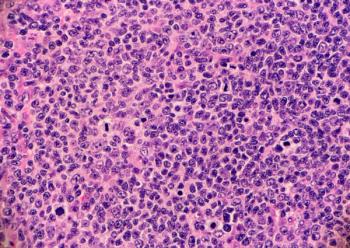
Clinical Trial Monitoring: Should Randomization Be Included?
While randomization is required by regulatory bodies, it is up to the sponsor on how to conduct it.
Developing a clinical trial’s effective monitoring plan can be overwhelming. The FDA acknowledges that while they require monitoring, their “regulations are not specific on how monitoring should be conducted.”1,2 Thus, it is challenging to understand what is required from a regulatory perspective. Should monitoring include randomization? To provide insight, this article summarizes relevant regulatory guidance documents on the monitoring plan’s inclusion of randomization.
What is clinical trial monitoring?
Monitoring is a process to ensure good clinical practice (GCP) and data integrity are maintained across a clinical trial. Table 1 defines the goals of monitoring in regulatory guidance documents.
How to determine a clinical trial’s monitoring strategy
The ICH states that: “The sponsor should determine the appropriate extent and nature of monitoring.”4 Thus, the sponsor determines:
- What areas are monitored (e.g., site activities, randomization data)
- How areas are monitored (e.g., site-based, central, sampled, or statistical)
- Who monitors each area (e.g., responsible role, at sponsor or outsourced)
To develop an effective monitoring strategy, regulatory authorities recommend that sponsors account for the trial’s risk assessment and focus on areas critical to GCP and data integrity.1,2,3,4,5 Further, the ICH indicates that “factors such as the objective, purpose, design, complexity, blinding, number of trial participants, investigational product, current knowledge of the safety profile, and endpoints of the trial should be considered.”4
Should randomization be included within the monitoring strategy?
When curating the monitoring strategy, regulatory guidance emphasizes focusing on critical data where MHRA provides randomization as an example since it is a key design aspect.5 More specifically, recent guidance places higher focus on inclusion of randomization. For instance, in the FDA’s 20232 expansion of its 20131 release, they now particularly recommend randomization under “what elements should sponsors include in monitoring plans.”2 See Table 2 for references of randomization monitoring inclusion in regulatory guidance.
Why the current focus on randomization monitoring?
Randomization has always been important within a clinical trial. For instance, FDA’s Good Review Practice - Clinical Review of Investigational New Drug Applications document includes randomization as one of the “critical aspects of overall development and trial design.”7 Furthermore, case study examples were provided from the FDA/MHRA joint workshop demonstrating where reviews of randomization data either confirmed integrity or revealed critical issues.8 They noted that quality measures have historically been reactive and suggested data should be assessed proactively across the trial’s duration.8 Randomization monitoring is a solution to meet this goal.
Moreover, randomization design complexity is increasing with adaptive trial designs9 and master protocols,10 where randomization adaptations (i.e., open/close/pause/reopen treatments, allocation ratio updates) are expected across the trial’s duration. These trials often experience multiple periodic regulatory reviews, particularly around randomization adaptations. These emerging design complexities are driving further need for executing randomization monitoring.
Who performs randomization monitoring?
The sponsor needs to decide which organization(s) and role(s) are responsible for each monitoring area. The FDA1 indicates that sponsors can outsource monitoring to a designee, but are still responsible for:
- Evaluating designee’s monitoring procedures/plans to ensure approach is consistent with the trial’s aspects.
- Oversight of monitoring activities (e.g., review reports, receive communication on progress).
Randomization monitoring is a type of statistical/central monitoring, which ICH notes should be performed by appropriately qualified/trained individuals, (e.g., biostatisticians).4 Thus, randomization monitoring, should be performed by a qualified biostatistics representative with:
- Unblinded status (i.e., assignments and randomization schedule)
- Proficient understanding of the protocol’s randomization design
- Comprehensive understanding of the randomization system’s functionality
- Access to requirements documentation (e.g., randomization system/schedule specifications)
- Access to source and randomization system data
For Monitoring to be effective, it needs to be performed by qualified individuals following robust procedures. As such, designating monitoring responsibilities is an important decision.
Summary
Ultimately, it is up to the sponsor to determine the extent and nature of the monitoring. Upon reviewing the recent regulatory guidance, randomization should be highly considered for inclusion. Trials with complex randomization designs should be prioritized. When including randomization monitoring, success is driven based on designating the appropriate individuals who follow robust procedures. Monitoring is a proactive approach to demonstrate the randomization data’s integrity across the clinical trial’s duration.
Jennifer Ross, director of biostatistics, and Kevin Venner, group leader, biostatisticians; both with Almac Clinical Technologies
References
1. FDA. Guidance for Industry - Oversight of Clinical Investigations - A Risk-Based Approach to Monitoring. [Online] August 2013.
2. —. A Risk-Based Approach to Monitoring of Clinical Investigations Questions and Answers - Guidance for Industry. [Online] 2023.
3. EMA. Reflection paper on risk based quality management in clinical trials. [Online] 2013.
4. ICH. ICH Harmonised Guideline. E6(R3) GOOD CLINICAL PRACTICE (GCP). [Online] 2023.
5. MHRA. Guidance Oversight and monitoring of investigational medical product trials. [Online] 2022.
6. EMA. Guideline on the content, management and archiving of the clinical trial master file (paper and/or electronic). Good Clinical Practice Inspectors Working Group (GCP IWG). [Online] Dec 2018. EMA/INS/GCP/856758/2018.
7. FDA. Good Review Practice: Clinical Review of Investigational New Drug Applications. [Online] Dec 2013.
8. Data Integrity in Global Clinical Trials: Discussions From Joint US Food and Drug Administration and UK Medicines and Healthcare Products Regulatory Agency Good Clinical Practice Workshop. Khin, N.A., Francis, G., Mulinde, J., Grandinetti, C., Skeete, R., Yu, B., Ayalew, K., Cho, SJ., Fisher, A., Kleppinger, C., Ayala, R., Bonapace, C., Dasgupta, A., Kronstein, P.D., and Vinter, S. 2020, Clinical Pharmacology & Therapeutics; 108:5, pp. 949-963.
9. FDA. Adaptive Designs for Clinical Trials of Drugs and Biologics Guidance for Industry. [Online] November 2019.
10. —. Master Protocols for Drug and Biological Product Development Guidance for Industry. [Online] December 2023.
Newsletter
Stay current in clinical research with Applied Clinical Trials, providing expert insights, regulatory updates, and practical strategies for successful clinical trial design and execution.




